Since 1 January 2009, new rules have applied in Europe for the production, control and labelling of products from organic farming. Expectations of the new EU legislation were high. However, fears that organic regulations would be watered down far outweighed hopes that the situation would improve for consumers and producers. Markus Blaser has fought his way through the old and new EU organic regulations and presents the most important changes in crop production, processing and labelling.
|
Legal bases
The legal texts can be found by their number in several languages on the website http://eur-lex.europa.eu/de/index.htm and can be downloaded free of charge.The Standing Committee on Organic Farming is the central body for the further development of EU legislation. It consists of representatives of the member states and decides on new regulatory proposals for the attention of the EU Commission by a qualified majority. |
|
Organic or ecological ? In contrast to other languages, two terms have become established in German for the same thing: organic farming is the same as biological farming and vice versa. In the German version of EU legislation, therefore, both terms are always used. However, because this is somewhat tedious in the long run, only the term organic will be used in this text. In addition, this avoids the danger of mixing up organic standards for agricultural products with organic standards for industrial goods (e.g. clothing) and services: Because mind you, the EU ecolabel is not identical with the EU organic label (see Merum 6/2008, p. 17)! Important to know: The terms "organic" and "eco" may only be used for agricultural products if they have been produced according to EU Regulation 834/2007. Private standards such as Demeter, Bio-Suisse, Naturland, Bioland etc. are often much stricter, but of course must not fall below the EU minimum requirements. |
1. Plant production
There is one central principle with which organic farming stands or falls: organic production means that plants should essentially feed on the ecosystem of the soil in which they grow. This principle is not new in EU organic legislation, but it is reaffirmed. But what does this mean in practical terms for cultivation and therefore the work of the organic farmer?
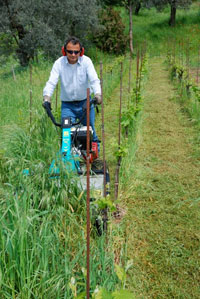
It means that there is a limit to fertilisers and soil improvers that do not come from the same farm. An organic farmer can, for example, agree with other organic farms (and only those!) that he will apply their manure to his fields, because he does not practise livestock farming himself. However, in order to protect both soil and water, the total amount of fertiliser is limited to a maximum of 170 kilos of nitrogen per hectare per year.The implementing regulation also contains a list of substances that may be used as fertilisers and soil conditioners in organic farming. All these regulations have been taken over from the old EU organic regulation. The same applies to a closed list of permitted plant protection products.
The real innovation is the ban on hydroponics. In this case, the plants do not go into the soil, but take root in water or around inorganic material such as the expanded clay balls often seen in houseplants. In such hors-sol cultures (hors-sol = French: without soil), nutrients must be constantly supplied to the plant via the water. This clearly violates the organic principle that nourishment must come from the soil. The ban on hydroponics is an important step forward, because it has happened that vegetable sellers in supermarkets have tried to sell hors-sol tomatoes as "organic". Since 1 January 2009 they are now rightly no longer allowed to do so.
2. GMO ban
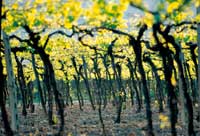 The basic regulation is clear: genetically modified organisms have no place in organic products and are strictly prohibited. In order to comply with the ban, the seller of organic food and feed must now enclose a confirmation with the goods stating that the product was produced "neither 'from' nor 'by' GMOs". The implementing regulation even contains a model of this confirmation. This means that the responsibility for compliance with the GMO ban lies with the producer, especially as the implementing regulation does not contain any specific provisions on the control of the GMO ban. Apparently the EU is of the opinion that this can be checked within the framework of the general controls prescribed for organic production.The GMO limit issued by the EU Commission has caused some confusion and concern: Is it really the case that organic products may contain up to 0.9 percent GMOs? No!! The limit value only states that the manufacturer does not have to include the sentence "This product contains GMOs." on the label of agricultural products that contain unintentional or technically unavoidable traces of GMOs of no more than 0.9 percent. This also applies to organic products, but here the organic farmer additionally vouches for the GMO-free nature of his product with the above-mentioned confirmation. If he knowingly adds up to 0.9 per cent GMOs, he is liable to prosecution. And even if the contamination was unintentional, it would still be a violation of the ban on GMOs in organic farming in the sense and spirit of the Organic Farming Ordinance, even if this cannot be punished because of the tolerance.
The basic regulation is clear: genetically modified organisms have no place in organic products and are strictly prohibited. In order to comply with the ban, the seller of organic food and feed must now enclose a confirmation with the goods stating that the product was produced "neither 'from' nor 'by' GMOs". The implementing regulation even contains a model of this confirmation. This means that the responsibility for compliance with the GMO ban lies with the producer, especially as the implementing regulation does not contain any specific provisions on the control of the GMO ban. Apparently the EU is of the opinion that this can be checked within the framework of the general controls prescribed for organic production.The GMO limit issued by the EU Commission has caused some confusion and concern: Is it really the case that organic products may contain up to 0.9 percent GMOs? No!! The limit value only states that the manufacturer does not have to include the sentence "This product contains GMOs." on the label of agricultural products that contain unintentional or technically unavoidable traces of GMOs of no more than 0.9 percent. This also applies to organic products, but here the organic farmer additionally vouches for the GMO-free nature of his product with the above-mentioned confirmation. If he knowingly adds up to 0.9 per cent GMOs, he is liable to prosecution. And even if the contamination was unintentional, it would still be a violation of the ban on GMOs in organic farming in the sense and spirit of the Organic Farming Ordinance, even if this cannot be punished because of the tolerance.
On the other hand, an exemption provision in the basic regulation, according to which food and feed additives which "are not available on the market other than produced by GMOs" may also be permitted in organic farming, provided that they are indispensable for processing, is to be regarded as much more delicate. This could indeed open a dangerous loophole for the mixing of GMOs and organic products.
3. Exemption provisions
Also in the case of other exemption provisions, the question arises again and again whether they make sense or whether they do not rather soften the ban on mixing organic and conventional cultivation. According to the basic regulation, the EU Commission can decide on exceptions to the organic production regulations under the following conditions:
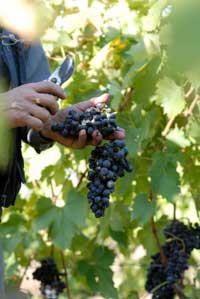 So far this all makes sense, after all we don't live in a perfect organic world. However, a certain uneasiness creeps over us when it comes to so-called parallel production. Under certain circumstances, a farm may cultivate both organically and conventionally managed production units in the same area. However, strict control requirements apply. Such an exemption may be granted for agricultural research, for the production of seeds, vegetative propagating material and young plants, and for pastures, but also for farms producing permanent crops (for at least three years, e.g. vines, olive trees or fruit trees) if they fulfil all the following conditions:
So far this all makes sense, after all we don't live in a perfect organic world. However, a certain uneasiness creeps over us when it comes to so-called parallel production. Under certain circumstances, a farm may cultivate both organically and conventionally managed production units in the same area. However, strict control requirements apply. Such an exemption may be granted for agricultural research, for the production of seeds, vegetative propagating material and young plants, and for pastures, but also for farms producing permanent crops (for at least three years, e.g. vines, olive trees or fruit trees) if they fulfil all the following conditions:
Now, all these provisions are not new, but they are questionable, as can be seen from the example of viticulture: Is it really in the spirit of organic farming for a winegrower to cultivate a vineyard organically if he is still allowed to blithely continue spraying fungicides, pesticides and insecticides on the immediately adjacent area for five years? The regulation argues for the fact that it takes away a lot of financial risk and psychological stress under certain circumstances. However, experience in Switzerland shows that farms with a planned five-year phased conversion eventually converted their entire farm much earlier because the additional administrative and effective workload of parallel production became far too great for them. The EU legislators would therefore have been better advised not to provide for parallel production in the new regulation.
4. Processed food and feed
The old EU regulation on organic production already applied to processed food and feed, but did not contain any explicit provisions in this respect. The basic regulation now contains process regulations for the processing of organic food and feed. They are intended to guarantee the organic quality of the end product, for example by preventing the mixing of organic and conventional products during processing. For this reason, at least 95 percent by weight of the ingredients of agricultural origin must be organic, otherwise the designations "organic" or "bio" may not be used on the label. This rule existed before, but was made a little more restrictive.
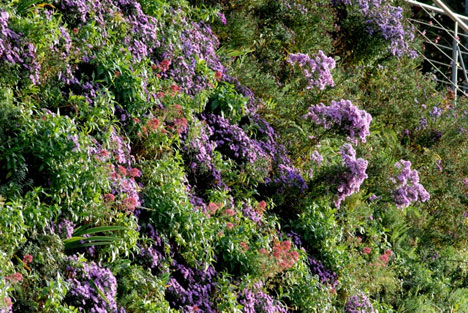
But shouldn't "organic" be 100 percent organic? Sure! It's just that we are no longer talking about raw products such as vegetables or fruit, but for example tinned tomatoes or ready-made sauces. It is therefore progress if the food industry is given strict rules for the processing of organically grown crops. In any case, a yoghurt made from conventional milk to which an organic strawberry has been added can no longer be called "organic yoghurt". Whereas before it was still possible to make an organic muesli with only 70 percent organic cereals despite the 95 percent regulation, this is no longer possible today.
5. Organic Community Logo
Since 1 January 2009, it has been compulsory to display the organic community logo on the packaging of organic food. However, the EU wants to replace the current, voluntary logo with a new one. However, a draft was contested by Aldi in spring 2008 because it could have been confused with the Aldi organic logo. The EU Commission therefore withdrew it. Designing and publicising a new logo takes time. That is why the EU has postponed the introduction of the compulsory logo until 1 July 2010. Until this date, the current logo can continue to be used voluntarily. Currently, a call for tenders is running, mainly to art colleges, to find a new logo.
6. The organic wine
The basic regulation promised to also legally regulate the production of organic wine, but there was not enough time to include corresponding provisions in the implementing regulation. In the meantime, the preliminary work on organic wine has been practically completed.
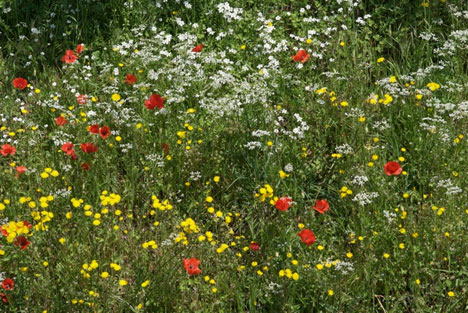
7. Conclusion and outlook
On the whole, the new EU organic legislation can be assessed as cautiously positive. Many of the provisions are not really new, but were already contained in the 1991 regulation in a slightly different formulation. However, the feared regression has not occurred, and innovations such as the ban on GMOs and hydroponics or the processing regulations for organic products can even be seen as progress. The regulation is also written in a more comprehensible way, and for the first time it also explicitly contains the most important principles of organic farming. Producers are given more individual responsibility, while the number of exemptions has been reduced and replaced by rules.
The EU and its Agriculture Commissioner Mariann Fischer-Boel, who has been heavily criticised in organic circles, seem to be more serious about organic farming than ever before. Since the beginning of the year, the EU Commission has been running its own organic campaign under the slogan "Good for nature, good for you.", the central element of which is an informative website: http://ec.europa.eu/agriculture/organic/home_de.
To Part 2:
The great innovation of the organic law - The organic wine
The above article was kindly provided by the MERUM editorial team. Many thanks for this
ALL PHOTOS IN THIS ARTICLE - COPYRIGHT MERUM